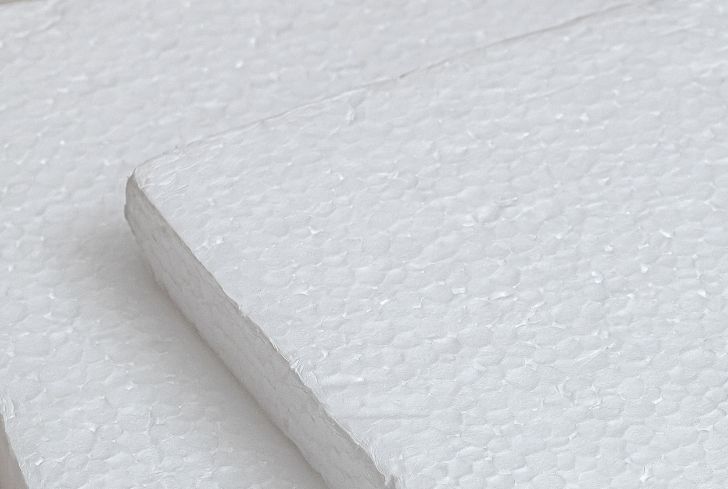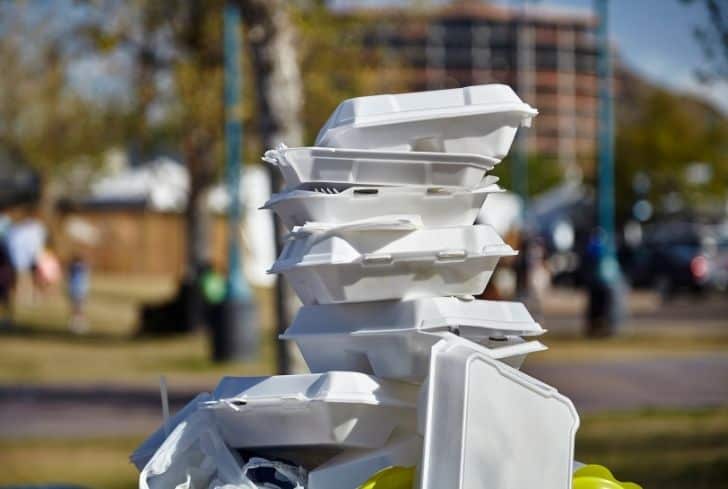Manufacturers release three million tons of Styrofoam into the United States consumer markets yearly. Styrofoam has a long history; it has been around since 1839. However, presently, a large portion of Styrofoam products are single use.
There are many ways to use Styrofoam, and many of them are daily or regular, making it important to examine how environmentally friendly this product is. Is Styrofoam biodegradable or non-biodegradable? Is it worse for the environment than plastic? And how do you dispose of it? This blog post will answer these questions, so don’t go anywhere!
Is Styrofoam Biodegradable or Non-Biodegradable?
Styrofoam is non-biodegradable. It is also called polystyrene and is made from a petroleum by-product called Styrene. Styrene can be described as a toxic chemical and synthetic material, giving it a non-biodegradable nature.
Anything inorganic is non-biodegradable. And by organic, we mean products or entities made from natural resources that are or were alive. To die a natural death, the thing in question must have been alive once.
Styrofoam is made from petroleum, a non-renewable natural resource (this is a problem, and we’ll soon get to the reason). However, there was not a time when crude oil, the source of petroleum oil used to produce Styrene, was ever alive. Therefore, it cannot die a natural death aided by nature.
In addition, the process of creating Styrofoam results in a product that adversely affects the ecosystem during degradation. Degradation is what happens that helps to reduce the size of Styrofoam waste in the environment.
This is what describes the decomposition process of non-biodegradable materials like Styrofoam.
The material must be capable of complete degradation to qualify as biodegradable. In the market today, most synthetic products don’t fit this description. This is because they have been chemically altered for longevity or durability and to satisfy other conditions that matter to the producers and consumers.
The downside of this modification is the effect it has on the environment. From manufacturing down to the consumption and post-use life of Styrofoam, the environment is not spared.
It never biodegrades, and you shouldn’t be encouraging biodegradation because toxic chemicals from the waste will leak into the ecosystem.
Are Styrofoam Cups Biodegradable?
No, Styrofoam cups are not biodegradable. They are incapable of utter breakdown by microorganisms and weather elements, and their decomposition period takes time. The end result of biodegradable material is a matter that’s helpful to the environment, mostly the soil.
However, the components that make Styrofoam are synthetic and can be described as toxic. Microbes, which include bacteria and fungi that break down organic matter, will be unable to act on this type of waste because of its structural composition.
It does not provide nutrients for the microorganisms tearing it down, nor does Styrofoam replenish the environment in any manner. Instead, it leaves harmful residues called microplastics and nanoplastics.
In contrast, biodegradable matter leaves humus behind.
Are Styrofoam cups biodegradable? The answer is a resounding no.
If Styrofoam were biodegradable material, that would be the best thing, but it isn’t. our consumption of this material, which is quite high, puts the environment in danger.
Sadly, Styrofoam cups are single-use products. This means we throw them out after using them once. That is a problem because this material quickly adds up, especially since it does not biodegrade like other organic waste.
How Long Does It Take For a Styrofoam Cup To Decompose?
It takes up to 500 years for a Styrofoam cup to decompose. This is a long time, but this length is typically associated with synthetic materials like expanded polystyrene, the material used to manufacture Styrofoam cups.
Styrofoam cups are more suitable for beverages and food because this material is a better insulator than plastic. This makes it incredibly popular in the food industry.
However, Styrofoam is a by-product of petroleum and crude oil, and materials made from this non-renewable resource are notorious for their inability to decompose. Crude oil is used to manufacture synthetic materials that are durable and have multiple use cases, but the downside is that these items never biodegrade or break down naturally.
It is easy to ignore the effects of single-use plastics on the environment. Still, the hard truth is that the issues will keep compounding until they begin to affect biodiversity and the ecosystem.

Is Styrofoam Worse For The Environment Than Plastic?
Yes, Styrofoam is worse for the environment than plastic. The primary reason is that it is harder to recycle, making it a single-use item that continues to litter the environment because it will not biodegrade. Styrofoam is also a form of plastic, but recycling it is more difficult.
Styrofoam is becoming popular for many reasons, including its insulin resistance, its lightweight, which makes transportation less of a burden on manufacturers, and its versatile use cases.
It is also growing in demand because of its single-use nature. However, this is a problem many people don’t understand the gravity of its effects. This is evidenced by the desire to continue purchasing Styrofoam cups even though they are single-use and cannot be recycled.
If you have a party and don’t want to do too many dishes afterward, you tell yourself it’s okay to buy Styrofoam cups and dishes. Well, the environment is at the receiving end of that decision, and you will soon see how it affects the ecosystem and human health.
It may surprise you that a study conducted in 1986 on blood samples taken in 1982 revealed that polystyrene was present in every part of the body fat.
The material breaks down upon contact with ethanol and heat, and it is no secret that Styrofoam is especially popular for holding coffee. The heat from the coffee and other hot drinks reduces the weight of the cups after use. It is safe to conclude that styrene leaks into the fluids we consume and lead to adverse health effects.
Styrofoam also pollutes all areas of the environment because of its structural nature. It can break down into smaller pieces that travel easily. Plastic also does this, but the difference is that Styrofoam erupts in balls larger than microplastics and can easily be ingested by ecosystem members, including marine creatures.
Styrofoam is not good for the body of any living organism that ingests it in massive amounts. In marine creatures, it can choke them or cause an intestinal blockage; the same applies to terrestrial inhabitants.
They may mistake the chunks of Styrofoam for food, and the Styrene content is dangerous to their health.
Let’s also talk about the ability of Styrofoam to melt at high temperatures. This is worse than plastic cups.
Using a plastic cup for your coffee will expose you to fewer health hazards because this material does not readily lose parts of its composition when exposed to heat. It is structurally stronger than Styrofoam.
Another reason plastic is better than Styrofoam is that you can recycle plastic. Despite its many shortcomings, you can recycle it in virtually every recycling center in the United States, but the same does not apply to Styrofoam.
Recycling Styrofoam is less common because it is not as profitable. Note that the material is very lightweight, which is why it is so popular, but it is also a downer.
Is Styrofoam Toxic To The Environment?
Yes, Styrofoam is toxic to every area of biodiversity because it contains harmful beings when inhaled. There are many ways Styrofoam is bad for the environment. The first is because of how long it takes for this material to break down.
Styrofoam will often stay in the environment for as long as five hundred years. Considering the number of Styrofoam products we use yearly, it is easy to conclude that this extensive degradation period will leave a strain on the ecosystem.
But that is not all. Styrofoam is also notorious for being toxic during consumption, manufacture, or degradation.
It releases harmful chemicals into the environment, poisoning the atmosphere, soil, and water.
Animals and humans are not spared from the effects of this toxic poisoning. Styrofoam has adverse health effects, including liver and lung damage. It may also be carcinogenic.
Another reason styrofoam is toxic to the environment is its source material. It is created from petroleum, a limited resource. However, it is even worse because of the hazards involved in manufacturing and turning petrol into Styrofoam.
How Do You Dispose of Styrofoam?
Unfortunately, most recycling centers don’t accept Styrofoam waste. But you can check before resorting to alternative disposal methods. Alternatives include upcycling or repurposing.
Your final resort should be throwing it in the trash, but we recommend avoiding that as much as possible.
There are many crafty ideas you can turn to when disposing of Styrofoam waste. But the best bet is to avoid consuming this product as much as possible. And if you cannot avoid it altogether, we recommend straying from the single-use habit associated with it.
Reuse as much as you can, and get creative with the disposal.
Conclusion
Styrofoam is not biodegradable, sadly. The best way to dispose of it without impacting the environment negatively is to reuse and upcycle it. However, a better alternative for the environment is to reduce its consumption altogether.






